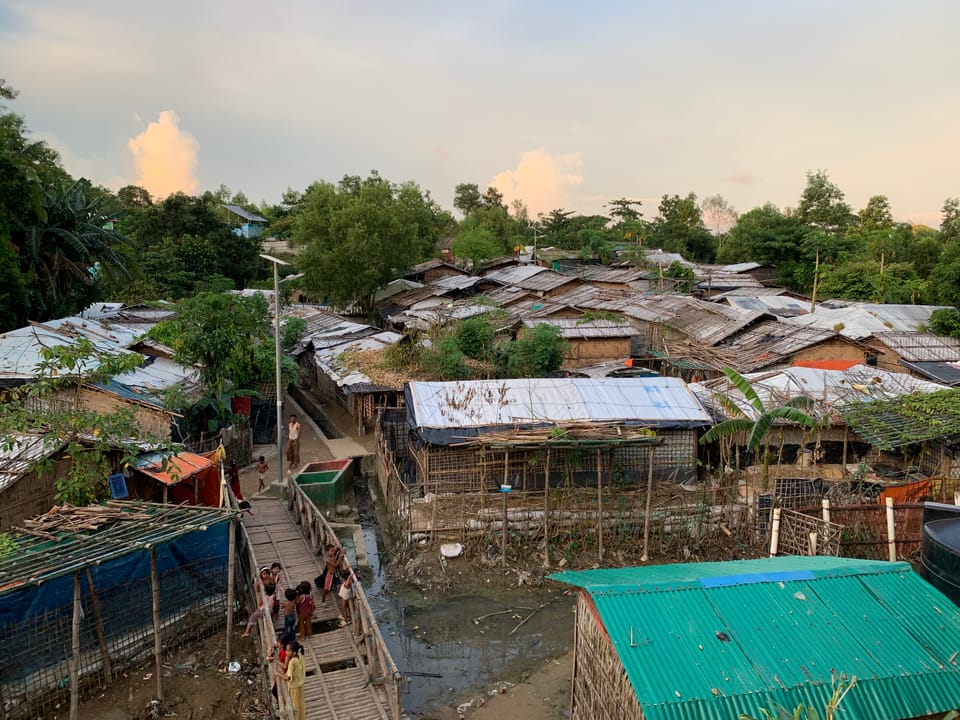The Rohingya Crisis: From Forgotten to Unwanted

It is easy to overlook or forget the Rohingya crisis, despite the vast awareness of its depth, or perhaps people may choose to ignore it even though they know about the prolonged suffering of the Rohingya people. They are often described as one of the most persecuted and marginalized populations on the planet.
The Rohingya are a predominantly Muslim ethnic group indigenous to Myanmar’s Rakhine State (formerly known as Arakan). Since the 1960s, Myanmar’s military has launched several operations of human rights violations against the Rohingya, aiming to remove them from their homeland. These actions included mass killings, forced displacement, and destruction of villages . Over generations, the Rohingya have been denied their civil, political, and economic rights, most notably under the 1982 Citizenship Act, which effectively stripped them of their citizenship, rendering them stateless .
In August 2017, the Myanmar military escalated its actions, committing what the United Nations has classified as ethnic cleansing. Over 742,000 Rohingya were forced to flee to Bangladesh, with widespread reports of atrocities, including mass killings, sexual violence, and the burning of entire villages . This marked one of the most significant refugee crises in recent history.
Today, nearly a million Rohingya live in Bangladesh, primarily in Cox’s Bazar, the largest refugee camp in the world. Despite their once-high visibility in global media, the Rohingya are increasingly seen as forgotten and unwanted. The crisis remains unresolved, with no clear path toward repatriation or citizenship for the Rohingya .
The Rohingya struggle daily with an uncertain future. Many young Rohingya use creative tools—such as poetry, photography, storytelling, music, drawing, and painting—to advocate for their rights, preserve their culture, and bring attention to their plight on the global stage.
Despite international efforts, including those led by the United Nations, finding a permanent solution to the Rohingya crisis remains elusive. Bangladesh, while not a signatory to the 1951 Refugee Convention, plays a crucial role in ensuring the Rohingya’s safety and protection. However, without strong international coordination and support from regional organizations like ASEAN, any efforts to repatriate the Rohingya to Myanmar are likely to stall .
Recently, renewed violence in Myanmar has led to the displacement of thousands more Rohingya. Reports from June to September 2024 indicate that around 25,000 individuals have fled to Bangladesh to escape the escalating conflict between the Arakan Army and Myanmar’s military . This ongoing instability in Rakhine State only deepens the uncertainty for the Rohingya.
Standing in solidarity with the Rohingya should not be seen as an act of charity but rather as fulfilling a moral obligation. Nobel Peace Laureate Muhammad Yunus, among others, continues to advocate for international cooperation to resolve the crisis, offering a glimmer of hope for a better future for the Rohingya people.
In the end, Myanmar will never be a truly democratic and inclusive nation without recognizing the rights of the Rohingya. Arakan must be a shared space where both the Rohingya and Rakhine people can coexist. Only through united efforts, both locally and internationally, can we hope to see an end to the Rohingya’s suffering and a permanent resolution to this crisis.
Contributor: Sirajul Islam is a Rohingya poet, writer, and human rights activist, originally from Myanmar and currently based in the world’s largest refugee camp in Cox’s Bazar, Bangladesh.
